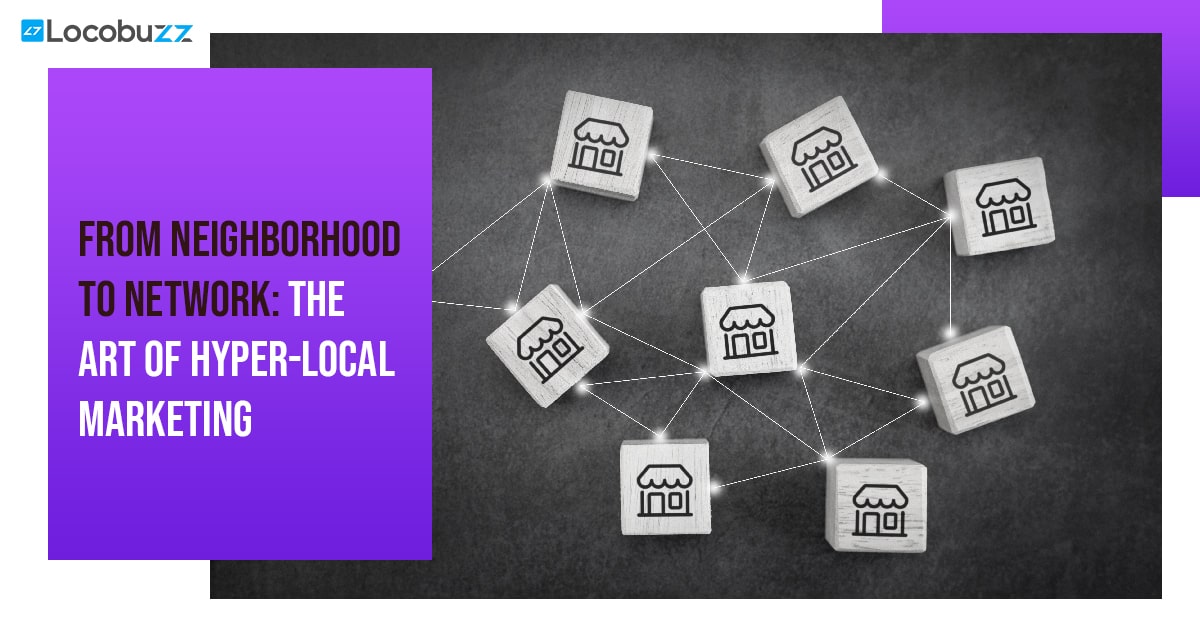Role of Customer Experience Metrics: Driving Customer Loyalty and Business Growth
 In today’s business landscape, measuring and improving customer experience has become increasingly critical to success. To achieve this, businesses must leverage various customer experience metrics, which help them gauge the effectiveness of their customer service strategies.
In today’s business landscape, measuring and improving customer experience has become increasingly critical to success. To achieve this, businesses must leverage various customer experience metrics, which help them gauge the effectiveness of their customer service strategies.
In this blog, we have discussed the top 10 metrics for measuring customer experience and how they can be effectively used. We have also explored the benefits of using customer experience metrics and best practices for measuring them. we will discuss the future trends in customer experience metrics and how Locobuzz can help businesses measure and improve their customer experience.
Table of Contents
What is Customer Experience Metrics?
Customer experience metrics refer to a set of measurable data points that businesses use to evaluate how effectively they are delivering positive experiences to their customers. These metrics allow businesses to track various aspects of their customers’ interactions with their products, services, and overall brand, in order to identify areas where improvements can be made.
In essence, customer experience metrics are key performance indicators (KPIs) that are used to monitor and improve the quality of a company’s customer experience. By tracking these metrics over time, businesses can gain valuable insights into how their customers perceive their brand, identify trends in customer behavior, and make data-driven decisions to enhance customer satisfaction and loyalty.
Some common customer experience metrics include Net Promoter Score (NPS), Customer Satisfaction (CSAT), Customer Effort Score (CES), and Customer Churn Rate. Each of these metrics measures different aspects of the customer experience and can provide valuable insights into customer satisfaction, loyalty, and retention.
In the following sections, we’ll take a closer look at each of these metrics and explore how businesses can use them to improve their overall customer experience.
Why is Customer Experience metrics important?
Customer experience metrics are essential for businesses because they provide a clear and objective way to measure the effectiveness of their customer experience initiatives. By tracking these metrics, businesses can gain valuable insights into how their customers perceive their brand and identify areas where improvements can be made.
Here are a few reasons why customer experience metrics are so important:
- Improved customer satisfaction: By monitoring customer experience metrics, businesses can identify areas where customers are dissatisfied and take steps to address these issues. This can help to improve overall customer satisfaction and loyalty.
- Increased customer retention: Customers who have a positive experience with a brand are more likely to remain loyal and make repeat purchases. By monitoring metrics like customer churn rate, businesses can identify trends and take proactive steps to reduce customer attrition.
- Better customer insights: Customer experience metrics provide businesses with valuable insights into how their customers interact with their products, services, and overall brand. This information can be used to inform marketing and product development strategies and improve the overall customer experience.
- Competitive advantage: Companies that prioritize customer experience are more likely to stand out in a crowded market and gain a competitive advantage. By monitoring customer experience metrics and making data-driven decisions, businesses can differentiate themselves from their competitors and build a loyal customer base.
Customer experience metrics are critical for businesses that want to improve the quality of their customer experience and build long-term relationships with their customers. By tracking these metrics and making data-driven decisions, businesses can deliver exceptional customer experiences that drive loyalty and growth.
How to Effectively Measure Customer Experience
Measuring customer experience can be a complex process, but there are a few key steps that businesses can take to effectively track and analyze customer experience metrics. Here are some tips for measuring customer experience:
- Identify your goals: Before you begin measuring customer experience, it’s important to identify your goals and what you hope to achieve. Are you looking to improve customer satisfaction? Reduce customer churn? Increase sales? By setting clear objectives, you can focus your efforts and choose the right metrics to track.
- Choose the right metrics: There are many different metrics that can be used to measure customer experience, but not all of them will be relevant to your business. Consider what aspects of the customer experience are most important to your business and choose metrics that align with those goals. Some common customer experience metrics include Net Promoter Score (NPS), Customer Satisfaction (CSAT), Customer Effort Score (CES), and Customer Churn Rate.
- Collect data: Once you’ve identified your goals and chosen the right metrics, it’s time to start collecting data. There are many different ways to collect customer experience data, including surveys, feedback forms, social media monitoring, and customer service interactions. Choose a method that works best for your business and make sure that the data is consistent and reliable.
- Analyze the data: Once you’ve collected customer experience data, it’s important to analyze it to gain insights and identify areas for improvement. Look for patterns and trends in the data, and use this information to inform your customer experience strategy.
- Take action: Finally, it’s important to take action based on the insights you’ve gained from customer experience metrics. Use the data to make data-driven decisions and take steps to improve the customer experience. This could involve improving customer service processes, redesigning products, or launching targeted marketing campaigns.
By following these steps, businesses can effectively measure customer experience and make data-driven decisions to improve the overall customer experience.
Top 10 Metrics for Measuring Customer Experience
- Net Promoter Score (NPS): NPS is a metric that measures the likelihood of customers to recommend a brand to others. It is calculated by subtracting the percentage of detractors (customers who are unlikely to recommend the brand) from the percentage of promoters (customers who are highly likely to recommend the brand). NPS can be used to gauge overall customer satisfaction and loyalty, and can be a good indicator of future growth.
To effectively use NPS, businesses should ask customers to rate their likelihood of recommending the brand on a scale of 0-10 and then segment respondents into promoters, detractors, and passives. Use the NPS score to track trends over time and identify areas where improvements can be made. - Customer Satisfaction Score (CSAT): CSAT is a metric that measures the satisfaction of customers with a particular interaction or experience. It is calculated by asking customers to rate their satisfaction on a scale of 1-5 or 1-10. CSAT can be used to track customer satisfaction with specific touchpoints, such as customer service interactions or product purchases.
To effectively use CSAT, businesses should ask customers to rate their satisfaction immediately after the interaction or experience. Use the CSAT score to identify areas where improvements can be made and track trends over time. - Customer Effort Score (CES): CES is a metric that measures the ease of the customer experience, such as the ease of making a purchase or finding information on a website. It is calculated by asking customers to rate their level of effort on a scale of 1-5 or 1-10. CES can be used to identify areas where the customer experience can be streamlined and simplified.
To effectively use CES, businesses should ask customers to rate their level of effort immediately after the interaction or experience. Use the CES score to identify areas where improvements can be made and track trends over time. - Retention Rate: Retention rate is a metric that measures the percentage of customers who remain with a brand over a given period of time. It can be used to track customer loyalty and overall customer lifetime value.
To effectively use retention rate, businesses should track the number of customers who remain with the brand over time and identify trends in customer behavior. Use the retention rate to identify areas where improvements can be made to retain customers and increase customer lifetime value. - Customer Lifetime Value (CLV): CLV is a metric that measures the total value of a customer over the course of their relationship with a brand. It takes into account factors such as customer acquisition cost and customer retention rate. CLV can be used to identify the most valuable customers and inform marketing and sales strategies.
To effectively use CLV, businesses should calculate the average value of a customer over their lifetime and identify segments of customers with high CLV. Use the CLV metric to inform marketing and sales strategies and identify opportunities to increase customer lifetime value. - Churn Rate: Churn rate is a metric that measures the percentage of customers who stop using a brand’s product or service over a given period of time. It can be used to track customer retention and identify areas where improvements can be made to reduce churn.
To effectively use churn rate, businesses should track the number of customers who stop using their product or service over time and identify trends in customer behavior. Use the churn rate metric to identify areas where improvements can be made to retain customers and increase customer lifetime value. - Customer Complaints: Customer complaints are a metric that measures the number and severity of complaints received by a brand. Complaints can be an indicator of areas where the customer experience can be improved and can also provide valuable insights into customer needs
To effectively use customer complaints as a metric, businesses should track the number and severity of complaints received over time and identify common themes or issues. Use this information to make improvements to the customer experience and prevent similar complaints in the future. - Customer Engagement: Customer engagement is a metric that measures the level of interaction and involvement of customers with a brand. It can be used to track customer loyalty and identify areas where the customer experience can be improved.
To effectively use customer engagement, businesses should track the level of interaction and involvement of customers with the brand, such as social media engagement, email open rates, and website visits. Use this information to identify areas where improvements can be made to increase engagement and loyalty. - Customer Loyalty: Customer loyalty is a metric that measures the likelihood of customers to continue using a brand’s product or service over time. It can be used to track customer retention and identify opportunities to increase customer lifetime value.
To effectively use customer loyalty, businesses should track the percentage of customers who continue using the product or service over time and identify trends in customer behavior. Use this metric to identify opportunities to improve the customer experience and increase loyalty. - Customer Referral Rate: Customer referral rate is a metric that measures the percentage of customers who refer others to a brand’s product or service. It can be used to track customer satisfaction and identify opportunities to increase customer acquisition.
To effectively use customer referral rate, businesses should track the percentage of customers who refer others to the brand and identify trends in customer behavior. Use this metric to identify opportunities to improve the customer experience and increase customer acquisition through word-of-mouth referrals.
In summary, these 10 metrics for measuring customer experience can provide valuable insights into customer satisfaction, loyalty, retention, and overall business growth. By effectively using these metrics to track customer behavior and identify areas for improvement, businesses can improve the customer experience and drive long-term success.
Benefits of Customer Experience Metrics
Measuring customer experience metrics can provide numerous benefits to businesses, including:
- Improved Customer Satisfaction: Customer experience metrics can help businesses identify areas where the customer experience can be improved. By making improvements based on this feedback, businesses can increase customer satisfaction and loyalty.
- Increased Customer Retention: By measuring customer experience metrics like retention rate and churn rate, businesses can identify areas where customers are leaving or staying loyal. By making improvements to the customer experience, businesses can increase customer retention and reduce churn.
- Enhanced Brand Reputation: A positive customer experience can lead to positive word-of-mouth marketing and enhanced brand reputation. By using customer experience metrics to identify areas for improvement, businesses can create a positive reputation among customers and prospects.
- Improved Product and Service Development: Customer experience metrics can provide valuable feedback on products and services, helping businesses identify areas for improvement and develop new products or services that meet customer needs.
- Increased Revenue and Profitability: A positive customer experience can lead to increased revenue and profitability. By improving customer satisfaction, loyalty, and retention, businesses can increase sales and reduce costs associated with customer acquisition.
- Competitive Advantage: By measuring customer experience metrics and making improvements based on customer feedback, businesses can create a competitive advantage over other businesses in their industry.
Measuring customer experience metrics can provide numerous benefits to businesses, including improved customer satisfaction, increased customer retention, enhanced brand reputation, improved product and service development, increased revenue and profitability, and a competitive advantage over other businesses in their industry.
Best Practices for Measuring Customer Experience Metrics
Measuring customer experience metrics is a critical aspect of understanding how customers perceive your business and identifying areas for improvement. Here are some best practices to consider when measuring customer experience metrics:
- Define Clear Objectives and Goals: Before you start measuring customer experience metrics, it’s essential to define clear objectives and goals for what you want to achieve. What do you want to improve? What specific metrics will help you measure progress towards those goals? By having a clear understanding of your objectives, you can choose the right metrics and ensure you’re measuring the right things.
- Choose the Right Metrics: There are many different customer experience metrics to choose from, such as NPS, CSAT, and CES, but not all metrics are relevant to every business. You should choose the metrics that are most relevant to your business goals and customer needs. For example, if customer loyalty is a priority, you may want to focus on metrics such as customer retention and referral rates.
- Collect Data Consistently: To get accurate and meaningful insights, you need to collect data consistently over time. You can do this through regular customer surveys, social media monitoring, and other customer feedback channels. It’s essential to have a reliable data collection process that captures feedback across all touchpoints.
- Use Data Analytics Tools: To effectively analyze customer experience metrics, you need to have the right data analytics tools and technology. These tools can help you visualize and interpret data, identify trends and patterns, and make informed decisions based on customer feedback.
- Act on Insights: Measuring customer experience metrics is only valuable if you act on the insights you gain from the data. Once you have identified areas for improvement, you should take action to address them promptly. By taking action, you can improve the customer experience and drive business growth.
To effectively measure customer experience metrics, you should define clear objectives and goals, choose the right metrics, collect data consistently, use data analytics tools, and act on insights. By following these best practices, you can gain a deeper understanding of your customers and improve the overall customer experience.
Future Trends in Customer Experience Metrics
The world of customer experience is constantly evolving, and new trends are emerging all the time. Here are some future trends in customer experience metrics to keep an eye on:
- Artificial Intelligence and Machine Learning: AI and machine learning are increasingly being used to analyze customer data and predict customer behavior. These technologies can help businesses identify patterns and trends in customer feedback, anticipate customer needs, and personalize the customer experience.
- Voice Analytics: With the rise of voice-activated digital assistants and smart speakers, voice analytics is becoming an increasingly important area of focus for businesses. By analyzing customer interactions with voice-enabled devices, businesses can gain insights into customer preferences and behavior.
- Real-time Customer Feedback: Real-time customer feedback is becoming more common, as businesses seek to capture customer feedback at every touchpoint. Real-time feedback allows businesses to respond quickly to customer needs and make improvements in real-time.
- Emotional Metrics: While traditional customer experience metrics such as NPS and CSAT are important, they don’t always capture the emotional aspects of the customer experience. As a result, emotional metrics are becoming increasingly popular, as businesses seek to understand how customers feel about their interactions with a brand.
- Omnichannel Customer Experience: Customers today expect a seamless experience across all channels and touchpoints. As a result, businesses are increasingly focused on providing an omnichannel customer experience that integrates all customer interactions, whether online or offline.
In summary, businesses that stay ahead of the latest trends in customer experience metrics will be better positioned to understand their customers and provide a superior customer experience. By embracing new technologies and approaches, businesses can gain deeper insights into customer behavior, anticipate customer needs, and drive business growth.
Leverage CX metrics to identify and address issues within your organization
Customer experience metrics can be a powerful tool for identifying and addressing systemic issues within your organization. Here are some steps you can take to leverage customer experience metrics in this way:
- Start by collecting comprehensive customer feedback: In order to identify systemic issues, you need to collect feedback from as many customers as possible. This includes feedback on every aspect of the customer experience, from product quality to customer service.
- Analyze your customer experience metrics: Once you have collected customer feedback, you need to analyze your customer experience metrics to identify patterns and trends. Look for areas where customer satisfaction is consistently low, or where there are significant gaps between customer expectations and your organization’s performance.
- Investigate the root causes of systemic issues: Once you have identified areas of concern, you need to investigate the root causes of the problem. This may involve conducting internal audits, reviewing customer service protocols, or analyzing product quality data.
- Develop a plan to address systemic issues: Once you have identified the root causes of systemic issues, you need to develop a plan to address them. This may involve making changes to your product or service offerings, retraining customer service representatives, or implementing new quality control measures.
- Monitor your progress: After you have implemented changes, it’s important to monitor your progress and continue collecting customer feedback. This will help you ensure that the changes you have made are having the desired impact on customer satisfaction.
By leveraging customer experience metrics to identify and address systemic issues, you can improve the overall quality of your products and services, enhance customer satisfaction, and drive business growth.
How will Locobuzz help in measuring Customer Experience Metrics
Locobuzz is a comprehensive customer experience management platform that can help you measure customer experience metrics in several ways. Here are some of the ways Locobuzz can help:
- Collect and analyze customer feedback: Locobuzz allows you to collect customer feedback from a variety of sources, including social media, review sites, and customer surveys. The platform then uses advanced analytics and natural language processing to analyze this feedback and identify trends and patterns in customer sentiment.
- Measure key customer experience metrics: Locobuzz allows you to measure key customer experience metrics such as Net Promoter Score (NPS), Customer Satisfaction Score (CSAT), and Customer Effort Score (CES). These metrics can help you understand how your customers perceive your products and services, and identify areas for improvement.
- Monitor and track customer interactions: Locobuzz allows you to monitor and track customer interactions across multiple channels, including social media, email, chat, and voice. This can help you identify potential issues and address them before they become major problems.
- Collaborate with team members: Locobuzz allows you to collaborate with team members to resolve customer issues and track progress over time. This can help you ensure that customer issues are addressed quickly and effectively.
- Generate custom reports: Locobuzz allows you to generate custom reports that highlight key customer experience metrics and trends over time. This can help you track progress and identify areas where you need to focus your efforts to improve the customer experience.
Overall, Locobuzz can be a powerful tool for measuring customer experience metrics and improving the overall customer experience.
Final Thoughts
In conclusion, measuring customer experience metrics is a vital part of improving the overall customer experience and driving business growth. By leveraging metrics such as Net Promoter Score (NPS), Customer Satisfaction Score (CSAT), and Customer Effort Score (CES), businesses can identify areas for improvement, address systemic issues, and create more loyal and satisfied customers.
Moreover, as customer expectations continue to evolve, it is essential to stay ahead of the curve by adopting new technologies and staying up to date with industry trends. By partnering with a customer experience management platform like Locobuzz, businesses can take their customer experience strategies to the next level and achieve long-term success.

















